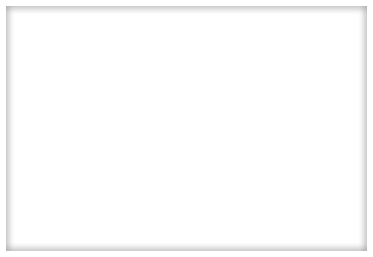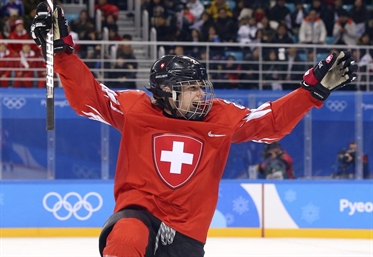Bottom half challenge
Bottom half challenge
Advancing to semis from Group B doable

 GANGNEUNG, SOUTH KOREA - FEBRUARY 10: Switzerland's Alina Muller #25 celebrates after her team scored a third period goal against Korea during preliminary round action at the PyeongChang 2018 Olympic Winter Games. (Photo by Andre Ringuette/HHOF-IIHF Images)
GANGNEUNG, SOUTH KOREA - FEBRUARY 10: Switzerland's Alina Muller #25 celebrates after her team scored a third period goal against Korea during preliminary round action at the PyeongChang 2018 Olympic Winter Games. (Photo by Andre Ringuette/HHOF-IIHF Images)
That year the Swiss were in the top group and advanced to the bronze-medal game, defeating Sweden, 4-3, in a thrilling game.
This year, though, the Swiss start in Group B, meaning things can’t be taken for granted. In Group A, the top two teams (which have always been Canada and the United States) advance directly to the semi-finals, and the third and fourth place teams are guaranteed a spot in the quarter-finals.
Not so in the “bottom group” Group B with the teams seeded fifth to eight. In that group the top-two teams also go to the quarters, but the bottom two are eliminated from medal contention. So, before dreaming of a bronze repeat, the Swiss must first of all earn enough points from its three preliminary games to advance to the playoffs.
That being said, an interesting trend has occurred in all but two senior women’s tournament since the current format of play was adopted by the IIHF in 2012. That was the year the round robin went from parallel structure (two groups with nations evenly split among the top eight) to vertical play, where Group A now consists of teams ranked 1-4 and Group B teams 5-8.
In only two of the six years have the third and fourth place teams in Group A both advanced to the semi-finals. In other words, four times has a Group B team defeated a Group A team to get into medal contention. Indeed, in Sochi, it was the Swedes who upset Finland in the quarters to advance to the bronze-medal game.
In 2012, that first year of the new format, the Swiss were in Group B and beat the higher-ranked Russians. They went on to win Women’s Worlds bronze with a 6-2 win over Finland.
A year later, the tables turned as the Group B Russians defeated the Group A Swiss and went on to win bronze.
It was the two years after Sochi that the favourites won all the games, but last year in Plymouth, Michigan, the apple cart was again upended thanks to the surprising Germans. Having just been promoted from Division I the previous year, they went on to beat Group A Russia in the quarters en route to an impressive fourth-place finish.
So Muller is right. It’s disadvantageous to start in Group B on paper. But under no circumstances does that mean a medal is impossible. This year, it’s likely the Finns and Russians that will qualify for the quarters from Group A, and if the Swiss can finish atop Group B they’ll face the fourth-place team from Group A. The pressure might start a bit earlier, but the task is perfectly logical and a bronze for the Swiss continues to be a definite possibility as for Sweden, the other team that started with three points.
Back to Overview







































